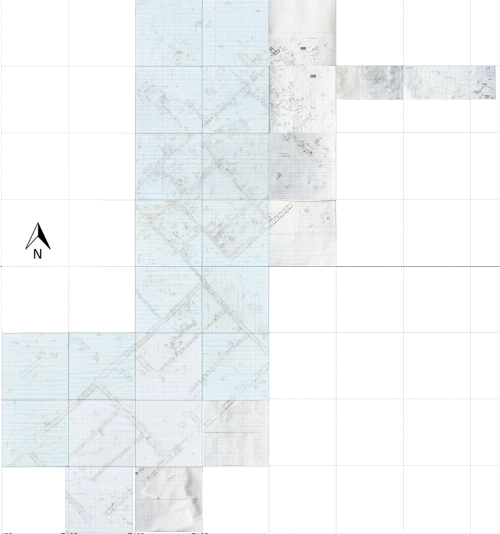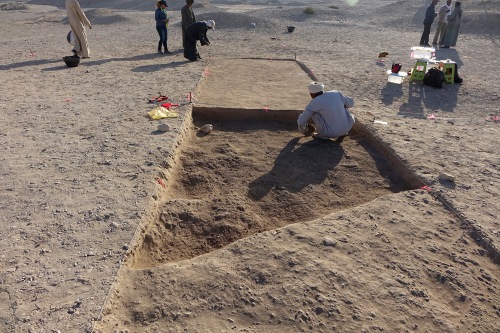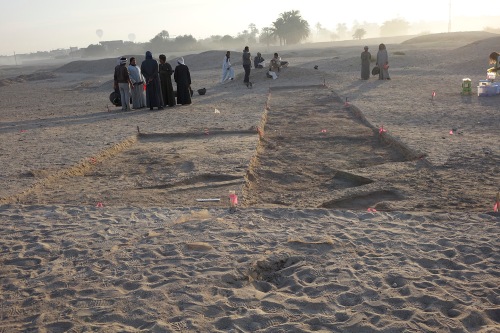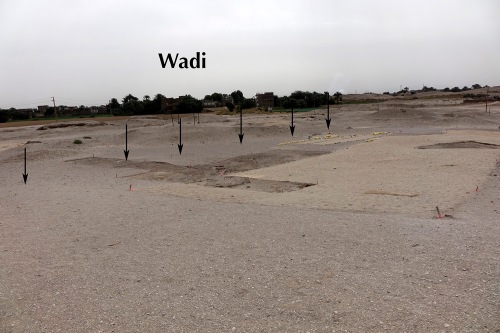https://imalqata.wordpress.com/2018/02/13/what-lies-beneath/
-- Sent from my Linux system.On 02/13/18 07:03, iMalqata Blog wrote:What Lies Beneath Janice Kamrin
We have been excavating in the West Settlement now for a little more than a week, continuing to clarify the architecture and function of this intriguing site.
Plan of the West Settlement excavations, 2015-2018, with the magazine area to the south and living areas to the north (see Digging the West Settlement)
We began by opening up several squares along the eastern edge of the excavated area, hoping to find a connection between the buildings here and Diana's industrial area farther to the east.
Hoping to avoid hitting any of the spoil heaps from the Met's early 20th century excavations, we chose to continue a line of squares toward the north end of the site. The first locus looked promising – not far below the surface, we began to find a wall that fit in with the ones we had found in earlier seasons —one brick wide, laid as a stretcher, and running southeast to northwest across our grid. But as we moved to the east, it just petered out, as did any hint of cultural material, and we soon came down onto the natural desert substrate, a coarse, dark brown-grey matrix with outcroppings of lighter "tafla."
The west half of Square N150/E140-N, looking north, with a new wall and mud tumble beginning to show.
Square N150/E140-N, looking east, with the natural desert surface exposed in the east half of the square.
As we extended our trench to the east, we continued to find nothing, just the original desert surface. When we moved to the south, we found some architecture in the western halves of our squares, but to the east, the architecture and most of the cultural remains are gone. In fact, although this is disappointing, it is not surprising: we are in a wadi, and it looks like water has washed away the eastern part of our excavation area.
View east down the line of squares at N150. Only the natural desert surface remained here, just below the current surface.
Looking southeast over the site. The small wadi indicated here likely funneled floodwaters through the east edge of the West Settlement and washed away any remains.
The good news is that we have also opened up two half-squares farther to the south, hoping to find more of what we believe to be the boundaries of the complex. The bricks in these "exterior" walls are laid as headers, rather than the usual 1-brick wide stretchers, and are therefore wider and more substantial (although again, always only one brick high). And we are happy to report that we have found this type of wall in three places, helping us to complete the plan of the eastern part of the complex.
Square N125/E135, showing one of the newly exposed sections of exterior wall






No comments:
Post a Comment